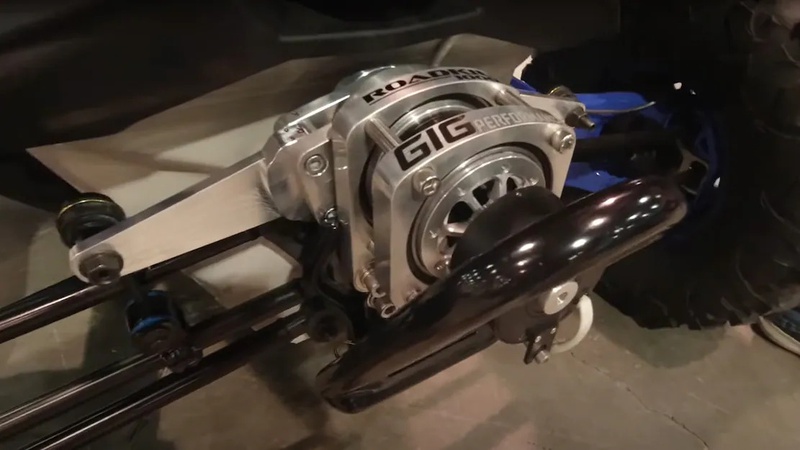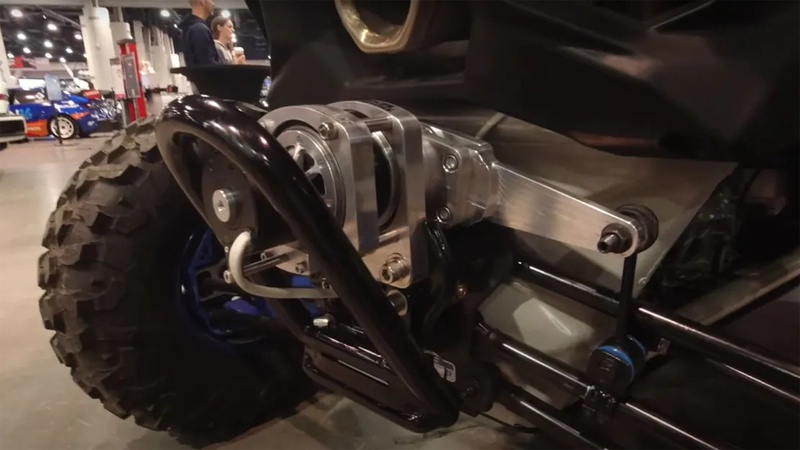The current prototype on display mounts to the body and features a pair of arms that are linked to the left and right suspension arms of an off-road side-by-side. These arms are mounted via one-way ratchet-type devices to either end of a generator, such that as they stroke up and down they crank the body (stator) and rotor in opposite directions, spinning the rotor inside the stator to generate electricity. Planetary gearing increases multiplies the rotational motion by a factor of ten. This was a convenient vehicle on which to demonstrate the Roadkil 5000, but Gig Performance has also devised mounts suitable for semi-tractor-trailer rigs as well and points out that the form factor can be tailored to suit most any road vehicle if integrated from the start.
The company reports having tested the Roadkil 5000 on semi-trucks and found that on typical roadways each unit generates 500 watt-hours continuously, or 4 kW total over an 8-hour driving shift. Their side-by-side model has returned similar results, generating 3 kW over a six-hour day of off-roading.



Damping is tunable, and it's unclear whether all vehicle types could rely solely on Roadkil 5000 for all damping needs. And because the damping is solely dependent on the amount of power that is being generated, there would have to be provision made for when, as an example, the battery is completely full and unable to accept energy. For all times when the battery can accept as much energy as can be generated, metering the generation amount would theoretically provide variable damping.
Although GigPerformance gained early funding from RevRoad, the company is still in its preliminary stages. It needs to partner with an OEM who can investigate the technology's potential electric output, resistance to deterioration and degradation, cost-effectiveness, and weight. The concept behind GigPerformance is intriguing but only time will tell if it lives up to its full potential.
Source: Motortrend


